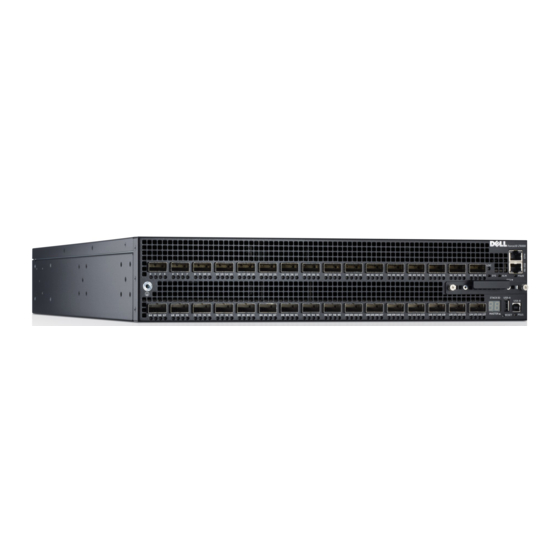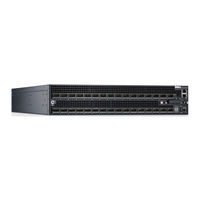
Dell Z9000 Manuals
Manuals and User Guides for Dell Z9000. We have 4 Dell Z9000 manuals available for free PDF download: Configuration Manual, Installing, Manual, Quick Start Manual
Dell Z9000 Configuration Manual (968 pages)
10/25/40/50/100GbE throughput
Brand: Dell
|
Category: Network Router
|
Size: 28 MB
Table of Contents
-
-
Audience31
-
Conventions31
-
-
-
4 Management
57 -
-
802.1X
82 -
-
IP Prefix Lists109
-
ACL Resequencing113
-
Route Maps115
-
-
-
How BFD Works136
-
BFD Sessions139
-
Configure BFD141
-
-
-
Route Reflectors169
-
BGP Attributes170
-
Weight173
-
Local Preference173
-
Origin175
-
AS Path176
-
Next Hop176
-
-
-
Enabling BGP184
-
-
Debugging BGP220
-
Capturing Pdus222
-
PDU Counters223
-
-
CAM Allocation230
-
Test CAM Usage232
-
View CAM Usage235
-
CAM Optimization235
-
-
-
-
-
Ring Status279
-
-
-
-
-
IGMP Version 2294
-
IGMP Version 3296
-
-
Configure IGMP299
-
Adjusting Timers301
-
IGMP Snooping303
-
-
18 Interfaces
316-
Interface Types317
-
VLAN Interfaces325
-
Null Interfaces326
-
-
-
Link Dampening346
-
Port-Pipes350
-
Dynamic Counters356
-
20 Ipv4 Routing
360-
IP Addresses360
-
Arp369
-
Icmp373
-
UDP Helper374
-
-
21 Ipv6 Routing
379-
-
Ipv6 Headers380
-
Addressing383
-
Icmpv6387
-
-
SNMP over Ipv6394
-
-
-
IS-IS Addressing401
-
-
Transition Mode403
-
Adjacencies403
-
-
Graceful Restart403
-
Timers404
-
-
-
24 Layer 2
446-
-
NIC Teaming451
-
-
Optional Tlvs462
-
Management Tlvs462
-
-
Configure LLDP469
-
Enabling LLDP471
-
Advertising Tlvs472
-
Debugging LLDP477
-
-
Anycast RP489
-
Enable MSDP493
-
Debugging MSDP504
-
-
-
-
-
Enable PIM-SM607
-
-
Port Monitoring617
-
-
Enabling PVST643
-
Disabling PVST644
-
-
-
Classify Traffic658
-
Advertisement
Dell Z9000 Installing (52 pages)
Brand: Dell
|
Category: Network Hardware
|
Size: 2 MB
Table of Contents
Advertisement
Advertisement



